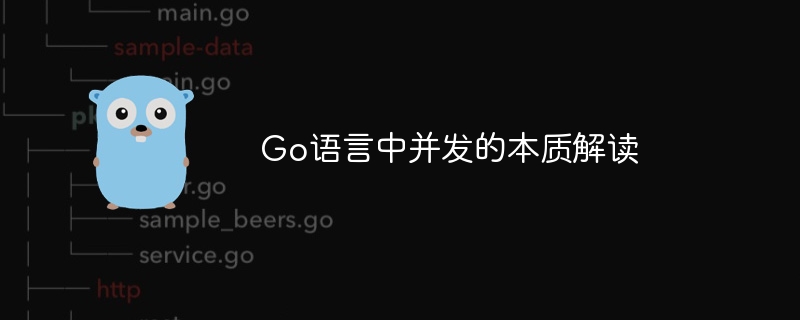

Interpretation of the essence of concurrency in Go language
Go language is an open source programming language developed by Google, aiming to improve developers’ productive forces. One of the most prominent features is its powerful concurrent programming capabilities. In the Go language, concurrent operations can be easily implemented using goroutine and channels. This article will delve into the nature of concurrency in the Go language and how to use goroutines and channels to implement concurrent programming.
In Go language, goroutine is a lightweight thread managed by the runtime of Go language. Compared with traditional operating system threads, goroutines are cheaper to create and destroy and can utilize system resources more efficiently. Through thegokeyword, we can easily create a goroutine, for example:
func main() { go sayHello() } func sayHello() { fmt.Println("Hello, World!") }
In the above code, thesayHello()function will be used as a goroutine Start so that concurrent execution can be achieved.
In the Go language, channel is a mechanism used to communicate between goroutines. Through channels, data transfer and synchronization between goroutines can be achieved. Use themake()function to create a channel, for example:
ch := make(chan int)
We can use the<-operator to send and receive data to the channel, for example:
ch <- 10 // 发送数据到channel x := <-ch // 从channel接收数据
Let’s take a look at an example of using goroutine and channel to achieve concurrent calculation:
func calculateSum(nums []int, ch chan int) { sum := 0 for _, num := range nums { sum += num } ch <- sum } func main() { nums := []int{1, 2, 3, 4, 5} ch := make(chan int) go calculateSum(nums[:len(nums)/2], ch) go calculateSum(nums[len(nums)/2:], ch) sum1, sum2 := <-ch, <-ch total := sum1 + sum2 fmt.Println("Total sum:", total) }
In the above code, We define thecalculateSum()function to calculate the sum of elements in the slice, and then execute this function concurrently through two goroutines. Finally, the calculation result is passed to the main function through the channel, and the sum is calculated.
In the Go language, goroutine and channel are two important components of concurrent programming. Goroutine provides lightweight threads to achieve concurrent execution, while channel provides a communication mechanism to achieve collaborative work between different goroutines. Through the cooperation of goroutine and channel, concurrent programming can be realized more concisely and efficiently.
In general, the Go language makes concurrent programming simpler and more efficient through the goroutine and channel mechanisms. Through the introduction and examples of this article, I believe that readers will have a deeper understanding of the nature of concurrency in the Go language. I hope that readers can give full play to the advantages of goroutines and channels in actual development to improve program performance and concurrency capabilities.
The above is the detailed content of Interpretation of the essence of concurrency in Go language. For more information, please follow other related articles on the PHP Chinese website!
 Usage of Type keyword in Go
Usage of Type keyword in Go How to implement linked list in go
How to implement linked list in go What are the Go language programming software?
What are the Go language programming software? How to learn go language from 0 basics
How to learn go language from 0 basics What are the methods to implement operator overloading in Go language?
What are the methods to implement operator overloading in Go language? What are the operators in Go language?
What are the operators in Go language? How to solve the problem of missing ssleay32.dll
How to solve the problem of missing ssleay32.dll What is system software
What is system software



